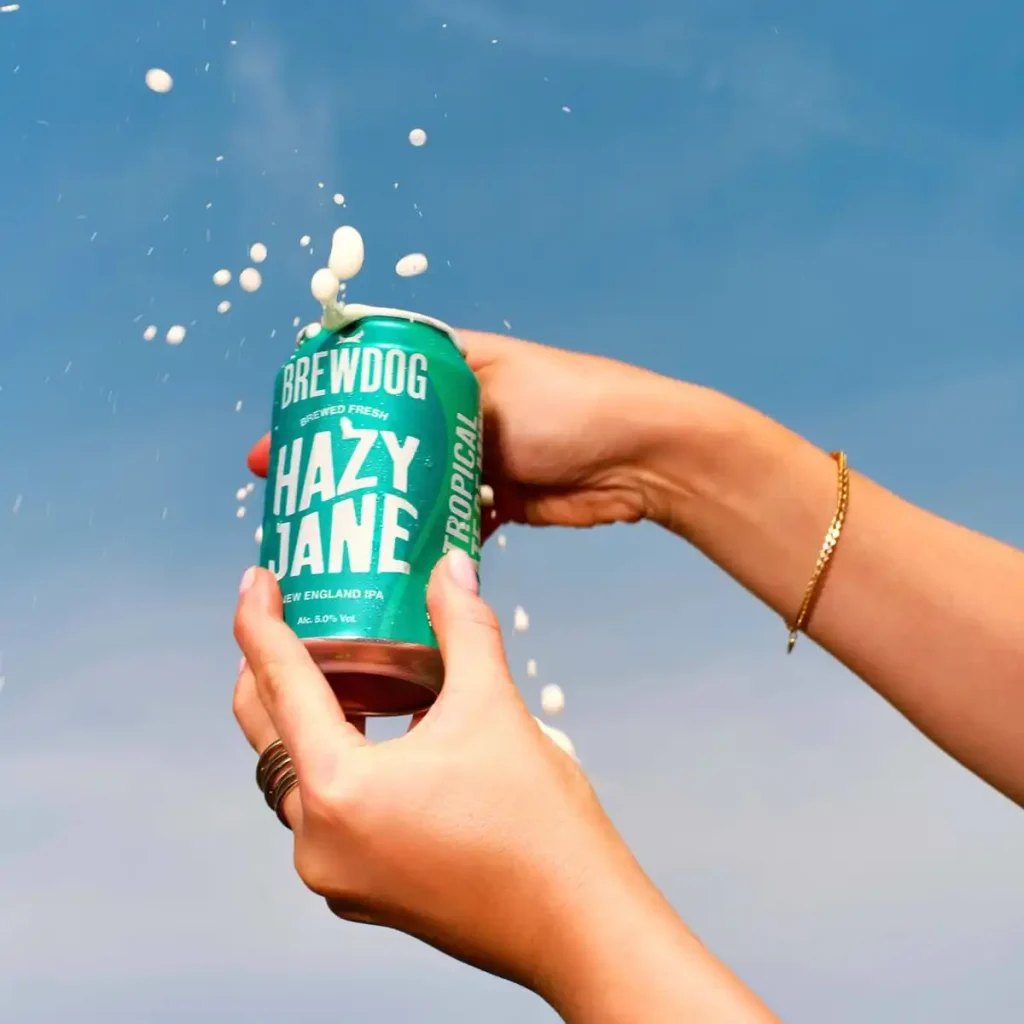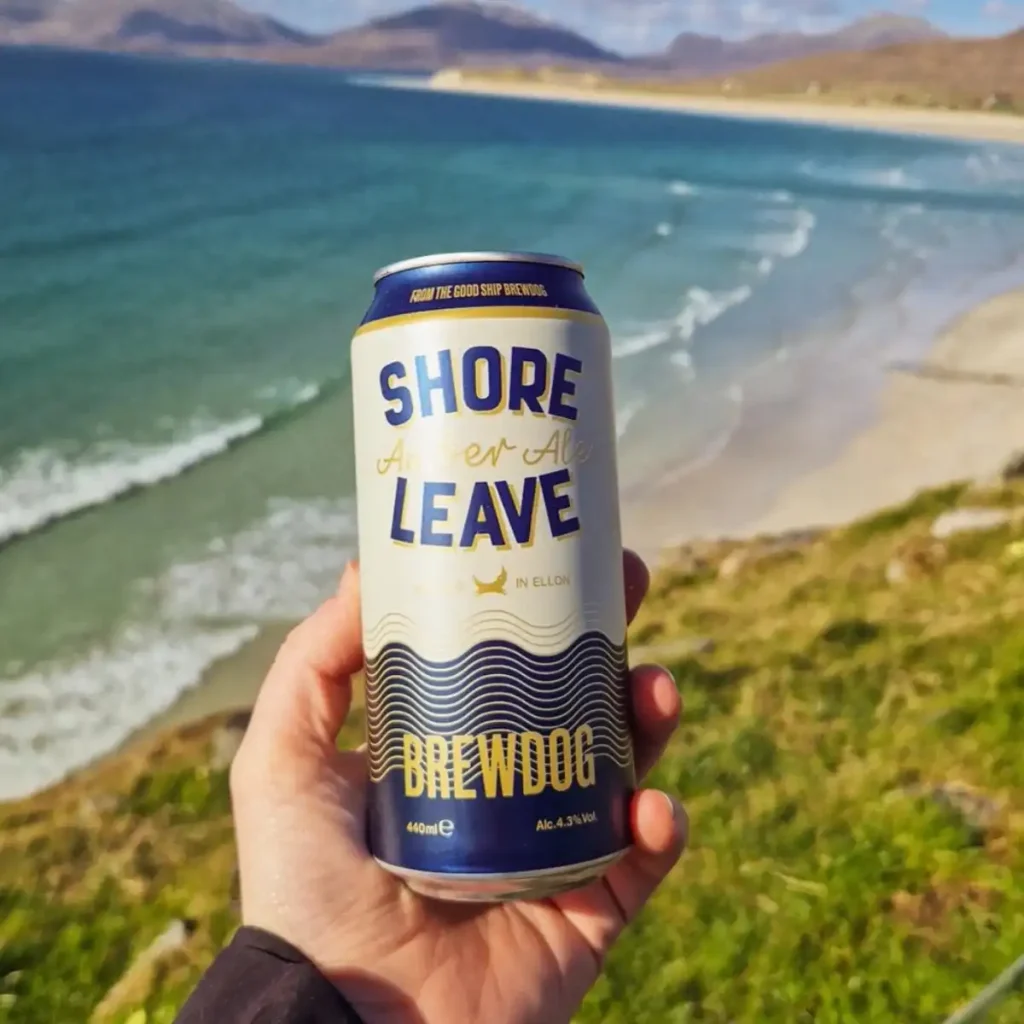BrewDog’s 2025 story is a tension between relief and risk. Relief, because a business that posted heavy losses in 2023 has moved back into the black. Risk, because the route to that profit has exposed structural weaknesses that cannot be ignored. The Scottish brewer that grew fast on a posture of rebellion now faces a more prosaic test. It must turn a defensive turnaround into a platform for durable growth, while repairing a brand that has lost credibility with parts of the public, regulators, and the trade. That task will define whether BrewDog remains a reference point in craft beer or settles into the long middle of the market.
The facts are stark. After delayed accounts revealed a pre-tax loss of £59.2 million for 2023, management shifted from expansion to discipline. Costs were cut, the estate was trimmed, and investment priorities were reset. For the year to 31 December 2024, adjusted EBITDA recovered to £7.5 million, a swing from a £2.5 million deficit. Revenues, however, were flat. That detail matters. The company did not sell much more beer. It ran a tighter ship. The question for 2025 is simple. Can BrewDog grow again without losing control of the numbers, and can it do so while rebuilding trust in the places where pints are poured and reputations are made?
Inside The 2023 Crisis And The 2024 Return To Black
The nadir arrived with the 2023 results. Previous losses, including £30.5 million in 2022, were eclipsed. Costs rose faster than sales. Impairments on underperforming bars dragged the operating line. A write-down of nearly £14 million underscored the gap between ambition and return. The delay in filing the accounts and the apology to retail investors pointed to operational strain as well as financial pain.
The repair job in 2024 had a different character. Net Revenue landed at about £280 million, basically unchanged year on year. Adjusted EBITDA moved into positive territory at £7.5 million. The engine of recovery was not demand. It was execution. Supply chains were tightened. Overseas operations were rationalised. Headcount moved lower. The business traded within its means.
A condensed view of recent performance:
| Metric | FY 2022 | FY 2023 | FY 2024 |
| Gross Revenue (£m) | 321.2 | 357.0 | 357.0 |
| Net Revenue (£m) | 285.6 | 280.9 | 280.0 |
| Pre-Tax Profit/(Loss) (£m) | (30.5) | (59.2) | Not disclosed |
| Adjusted EBITDA (£m) | (12.8) | (2.5) | 7.5 |
| Employee Headcount | 2,649 | 2,620 | 2,400 |
The numbers show a business that has stabilised but not yet reignited. That is progress, not victory.
What A Shelved IPO Reveals About Capital Strategy
For years, a BrewDog IPO sat on the horizon as a liquidity event and a validation of the growth story. The pause signalled in 2025 is logical in light of flat sales and a profit built on cost control. Public markets typically reward credible growth. Without it, valuation ambitions compress, scrutiny rises, and the trade-offs get harsher. The company’s recent filings at Companies House suggest a focus on strengthening lending arrangements and collateral structures. That is rational for a private entity intent on optionality. It buys time to execute, reduces the pressure to tell a breakneck growth story, and keeps strategic freedom to divest, franchise, or partner where the returns justify the effort.
Leadership Reset And The Shift To Operational Discipline
Leadership changes shaped the pivot. James Watt stepped aside as chief executive in 2024 after 17 years, remaining a significant shareholder and non-executive presence. James Taylor, previously CFO and COO, took the helm. The elevation of Lauren Carrol to COO and the creation of a supply-chain leadership role signalled a move from personality-driven disruption to process, margin integrity, and predictable delivery. The message to investors and staff was unambiguous. The next phase will be measured in cash conversion, site economics, and return on invested capital rather than headlines.
UK Bar Closures And The Economics Of Rationalisation
In 2025, the company announced the closure of 10 UK bars, including its original flagship in Aberdeen. The decision is best seen through the lens of capital discipline. Underperforming venues depress profitability twice. They tie up cash and distract management from higher-yield opportunities. Closing them acknowledges the reality of a tougher UK hospitality environment, where energy costs, business rates, wage inflation, and cautious consumer demand punish marginal sites. The move trims footprint, but it also concentrates resources on locations with the right mix of rent, footfall, dwell time, and local brand affinity.
Franchising Abroad As A Capital-Light Growth Model
While the UK estate contracts, international plans expand, but in a different form. The new growth engine is franchise expansion with seasoned operators. The target is roughly 300 venues worldwide by 2030, a level reached not by heavy capital outlay, but by partnering in markets where local know-how and distribution relationships are decisive. India has been identified as a key market with a stated aim of 25 franchised bars by 2028. Activity in China and South Korea is building. Openings in cities such as Bangkok, Perth, and Denver illustrate a playbook that prefers fee-based growth and brand reach over balance-sheet risk. Travel-hub sites with partners like SSP Group add exposure to high-traffic locations at lower capital intensity.
This is a coherent response to recent lessons. It preserves international upside while avoiding the debt and depreciation that weighed on prior results. It also creates a portfolio of cash-flow streams less correlated to UK pub cycles.
Losing The On-Trade Battle To Big-Backed Craft Rivals
The most acute pressure sits on the UK in trade. Distribution losses on draught have been heavy. Industry data indicate that BrewDog has surrendered a large number of taps across the country in the past two years. Punk IPA, once a near-default choice on craft lines, has seen a steep reduction in pub presence. Two forces drive this. First, pub companies have consolidated ranges to simplify supply and to improve rebate terms. Second, global brewers have embedded their acquired craft brands into those rationalised lists. Beavertown and Camden Town maintain their independent identity, while benefiting from the logistical support and sales clout of Heineken and AB InBev, respectively.
BrewDog sits between identities in this contest. It no longer owns the outsider narrative to the same extent, and it does not command the integrated distribution networks of the multinationals. Its strong off-trade performance also has a paradoxical effect in pubs. Supermarket ubiquity validates demand, but it can blunt a beer’s sense of discovery at the bar. Publicans seeking novelty or local differentiation have more reason to rotate Punk off for the next new thing.
The Wetherspoon Dependence And Distribution Risk
The tie to JD Wetherspoon now carries outsized importance. With more than 700 pubs, the account anchors a meaningful slice of BrewDog’s remaining draught volume. That scale is valuable, yet it concentrates risk. The loss of a single national partner would have a ripple effect on production planning, marketing, and working capital. Diversification of on-trade routes, from independent freehouses to festivals and event pours, will matter if the company wants to reduce reliance on one buyer’s decisions.


Regulatory Scrutiny And The Erosion Of Ethical Claims
Marketing controversies have been a recurring feature. The ASA’s 2025 decision to ban a Wingman IPA poster for implying that alcohol could ease boredom or loneliness fits a longer record of upheld complaints. Past findings include misleading claims around “solid gold” prize cans that were gold-plated, and environmental assertions that were not evidenced to the required standard. The Portman Group has also ruled on product naming and packaging over the years. Even when verdicts go in the company’s favour, the cycle of complaints, headlines, and corrections dilutes message discipline.
The brand’s ethical platform has also taken hits. The loss of B Corp status in 2022 followed staff allegations about workplace culture. In 2024, the move away from Real Living Wage accreditation drew sharp criticism, especially during a cost-of-living squeeze. For a business that once framed itself as values-driven, these reversals carry a reputational cost that lingers beyond any one news cycle. Rebuilding credibility will require sustained action, public reporting on targets, and external verification, not slogans.
Fun fact The much-publicised “solid gold” BrewDog prize cans were later confirmed to be gold-plated, a detail that led to an ASA rebuke.
Rebrand 2025 And The Search For Authenticity
The 2025 refresh, built around “Fresh Cans, Fresh Food, Fresh Faces,” attempts to turn the page. The emphasis is on product and hospitality rather than provocation. The stated aim is to put beer and community back at the centre. That is sensible, yet it opens a different challenge. If the old punk identity no longer convinces, what replaces it. A cleaner look and a calmer tone reduce self-inflicted risk. They do not, by themselves, create distinctiveness. The most convincing route is likely relentless quality control, site-level hospitality that rewards repeat visits, and a portfolio that keeps pace with changing tastes in non alcoholic beer, lower bitterness profiles, and fruit-forward styles without abandoning core lagers and IPAs.
Where BrewDog Still Holds Advantages
Despite setbacks, the company retains real strengths. Supermarket data places several BrewDog brands among the top sellers in the off-trade. That shelf presence is an annuity of sorts. It steadies cash flow and protects scale at the Ellon brewery, which now boasts expanded capacity north of 2 million hectolitres. New lines have also worked. Black Heart stout gained traction quickly in 2023. Wingman, despite the advertising ruling, secured strong value and volume in 2024’s new product rankings. International operations provide diversification. Reported growth in Australia and Germany shows that the brand can travel when local execution is sound.
These advantages are not trivial. They demonstrate that the product pipeline is operational, operations can deliver at volume, and the brand retains latent goodwill among a broad base of supermarket shoppers.
Market Outlook For 2025 And The Strategic Choices Ahead
The backdrop is mixed. Forecasts point to healthy growth in the craft beer market over the medium term, with a steady shift towards premium and flavourful styles. At the same time, non alcoholic beer expands at pace as mindful drinking becomes mainstream. BrewDog has credible entries in both spaces and can lean into that demand. Yet the hospitality sector is fragile. Hundreds of pubs closed in 2024. Costs remain elevated. Disposable income is under pressure. The fight for remaining taps will be unforgiving, and the largest brewers will defend their placements with vigour.
Three levers look most relevant:
- Channel strategy. Balance the reliability of the off-trade with targeted on-trade wins where the brand adds incremental footfall and spend for the operator. That likely means fewer, deeper relationships with groups that value national marketing support and consistent supply, alongside a push into high-impact independents and festivals.
- Brand governance. Remove avoidable regulatory friction. Pre-clear messaging where possible. Substantiate environmental and social claims with third-party evidence. Publish progress on pay and workplace metrics. Credibility must be earned over time.
- Capital discipline. Keep the estate under continuous review. Favour franchising for new geographies. Deploy owned capital only where four-wall economics are proven and resilient.
Conclusion And Next Steps For Sustainable Growth
BrewDog has executed a necessary pivot. The company traded out of crisis and back into profit. It did so by simplifying operations, closing weak assets, and rethinking capital deployment. That has bought time and optionality. The harder work begins now. Sustainable growth requires demand-led progress in the on-trade, sharper brand stewardship, and a product mix that leads, not follows, the evolving palate of drinkers at home and at the bar.
The test is not whether BrewDog can recapture its earliest posture. It is whether a more mature version can still set the pace. If the business pairs disciplined execution with quiet excellence in the glass and a more grounded relationship with staff, partners, and watchdogs, it can recover lost ground. If not, it risks becoming a familiar label in supermarkets and a shrinking presence on taps, a company remembered for how it started rather than how it adapted. As in brewing, consistency makes the difference. You build it batch by batch, pint by pint. The brewer who understands that simple truth will prosper. The one that does not will spend its time chasing foam.




